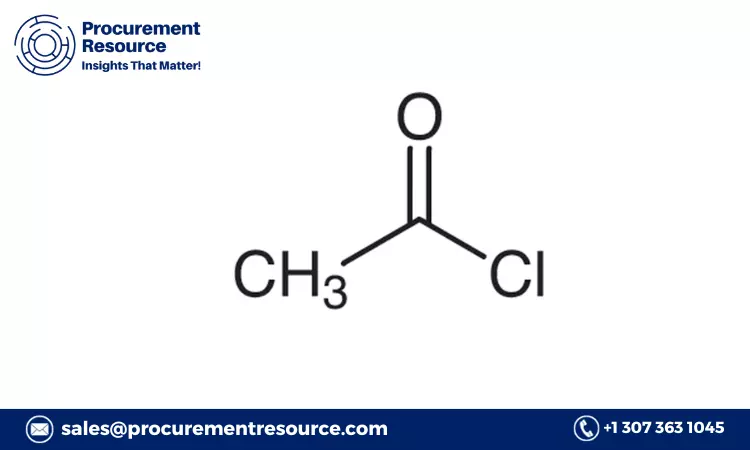Production Cost of Epoxy Resin: A Detailed Analysis for Manufacturers
Epoxy resin is a versatile and high-performance material used across various industries, including construction, automotive, electronics, and aerospace. Known for its strong adhesive properties, chemical resistance, and durability, epoxy resin is widely applied in coatings, adhesives, sealants, composites, and electronics. Understanding the production cost of epoxy resin is essential for manufacturers looking to optimize their production processes, reduce expenses, and maintain competitiveness in an evolving market.
At Procurement Resource, we offer comprehensive insights into the cost components of epoxy resin production, helping businesses make informed decisions and improve their overall cost-efficiency in production.
The Importance of Epoxy Resin in Various Industries
Epoxy resin is prized for its ability to bond materials, resist environmental degradation, and maintain mechanical strength over time. Its versatility makes it valuable for several applications:
- Construction: Epoxy resin is used in flooring, coatings, adhesives, and as a structural material in concrete repairs and reinforcements.
- Automotive: Epoxy is applied in protective coatings, adhesives, and composite materials for lightweight vehicle components.
- Electronics: Epoxy resin serves as an insulator and protective encapsulant in electronic circuits and components.
- Aerospace: Due to its lightweight and strong bonding properties, epoxy resin is used in composites for aircraft components.
As epoxy resin is critical to many industrial processes, understanding its production costs is vital for manufacturers aiming to remain competitive while meeting market demand.
Request a Free Sample – https://www.procurementresource.com/production-cost-report-store/epoxy-resin/request-sample
Key Factors Influencing Epoxy Resin Production Costs
The production of epoxy resin involves the polymerization of epichlorohydrin and bisphenol A (BPA) or other phenols. Several key factors contribute to the overall cost of epoxy resin production, including raw material pricing, energy consumption, labor costs, and environmental regulations. Below is a detailed breakdown of the major cost drivers:
1. Raw Material Costs
The primary raw materials for epoxy resin production are epichlorohydrin and bisphenol A (BPA). These two chemicals undergo a polymerization reaction to form the epoxy resin. The cost of these raw materials plays a significant role in determining the overall production cost.
- Epichlorohydrin: Epichlorohydrin is produced from propylene (derived from crude oil) and chlorine. Any fluctuations in the price of propylene or chlorine, often linked to the volatility of crude oil prices, impact the cost of epichlorohydrin, thereby influencing epoxy resin production costs. Market disruptions, geopolitical events, and supply-demand imbalances in the chemical sector can also cause price fluctuations.
- Bisphenol A (BPA): BPA is produced from phenol and acetone, both petrochemical derivatives. The prices of these feedstocks are influenced by crude oil prices, refining capacity, and global demand for BPA in other applications, such as polycarbonate plastics. Any increase in BPA prices will directly increase epoxy resin production costs.
- Supply Chain Dynamics: The global supply chain for raw materials can impact the availability and cost of epichlorohydrin and BPA. Trade disruptions, tariffs, and logistical challenges can all influence the price and lead to higher production costs.
2. Energy Costs
The polymerization of epichlorohydrin and BPA into epoxy resin is an energy-intensive process that requires heat and pressure to complete the reaction. Energy consumption, therefore, plays a critical role in determining production costs.
- Electricity and Fuel: The polymerization process, along with additional steps like curing, requires significant amounts of energy. Any fluctuations in electricity or fuel prices—such as natural gas or oil—can directly affect the production cost of epoxy resin.
- Energy Efficiency: Manufacturers that have invested in energy-efficient technologies can lower their overall energy consumption, leading to cost savings. However, the initial capital investment required to upgrade equipment and improve energy efficiency may affect short-term production costs.
3. Labor and Operational Costs
Labor and operational costs are essential components of epoxy resin production expenses. Skilled labor is required to manage the complex polymerization process, operate equipment, and ensure quality control.
- Skilled Workforce: The production of epoxy resin requires experienced chemical engineers and operators who can manage the intricate production processes. Hiring, training, and retaining these professionals add to the overall labor costs.
- Operational Overheads: Other operational expenses, including maintenance of equipment, transportation of raw materials, and quality assurance, also contribute to the total production cost. Operational overheads can vary depending on the size of the production facility and its location.
4. Technological Advances and Production Efficiency
Technological advancements in polymerization and resin formulation can help reduce epoxy resin production costs. While these innovations often require significant upfront investment, they can lead to long-term cost savings through improved efficiency.
- Advanced Polymerization Techniques: Advances in the polymerization process can lead to higher yields and lower waste, thereby reducing the cost of producing epoxy resin. Techniques such as improved catalyst systems or optimized reaction conditions can help improve the efficiency of the production process.
- Automation: The introduction of automated systems in epoxy resin production can help manufacturers reduce labor costs, increase production consistency, and minimize errors. Automation allows for more precise control over reaction conditions, leading to higher-quality products with lower energy consumption. However, the capital investment required for automation must be factored into production costs.
5. Environmental and Regulatory Costs
The production of epoxy resin is subject to strict environmental regulations, particularly concerning emissions, waste management, and safety protocols. Compliance with these regulations adds to the overall cost of production.
- Environmental Compliance: The production of epoxy resin generates hazardous byproducts, including chlorine-containing waste and volatile organic compounds (VOCs). Companies must invest in waste management and emissions control systems to comply with environmental regulations, which adds to the overall production cost.
- Regulatory Compliance: Epoxy resin manufacturers must comply with a range of regulatory frameworks, including health and safety standards, emissions controls, and environmental impact assessments. These regulatory requirements add to the cost of production, particularly in regions with stringent environmental laws.
How Procurement Resource’s Epoxy Resin Production Cost Reports Can Help
At Procurement Resource, we provide detailed epoxy resin production cost reports that offer in-depth insights into the various cost components involved in production. Our reports are designed to help businesses optimize their production processes, reduce costs, and make informed decisions based on reliable, data-driven analysis.
Our reports include:
- Raw material cost analysis: Detailed insights into epichlorohydrin and BPA pricing trends, and how fluctuations in these raw materials affect epoxy resin production costs.
- Energy consumption and efficiency: A breakdown of energy requirements for epoxy resin production and strategies for reducing energy consumption without compromising product quality.
- Labor and operational costs: An analysis of labor expenses and operational overheads, with recommendations for improving efficiency and reducing costs.
- Technological advancements: Information on the latest innovations in epoxy resin production that can help reduce costs and improve efficiency.
- Regulatory compliance costs: Insights into the costs associated with meeting environmental and regulatory requirements, ensuring that your production process complies with global standards.
Why Understanding Epoxy Resin Production Costs is Essential for Success
As global demand for high-performance materials such as epoxy resin continues to rise, understanding and managing production costs is essential for manufacturers looking to remain competitive. Epoxy resin’s applications in industries like construction, electronics, and aerospace make it a critical material for several key sectors, and optimizing production costs is vital for maintaining profitability.
At Procurement Resource, we help businesses navigate these challenges by providing reliable, data-driven insights into epoxy resin production costs and market trends. Whether you are looking to reduce production expenses, improve operational efficiency, or ensure compliance with regulatory requirements, our comprehensive cost reports provide the information you need to succeed in the epoxy resin market.
Request Your Free Sample Report Today
Staying ahead of market trends is essential for businesses involved in epoxy resin production. Procurement Resource offers free sample reports that provide valuable insights into the costs and trends shaping the epoxy resin market. Request your free sample report today and discover how our detailed cost analysis can help you make smarter, data-driven decisions.
Contact Us:
Company Name: Procurement Resource
Contact Person: Leo Frank
Email: sales@procurementresource.com
Toll-Free Numbers:
- USA & Canada: +1 307 363 1045
- UK: +44 7537171117
- Asia-Pacific (APAC): +91 1203185500
Address: 30 North Gould Street, Sheridan, WY 82801, USA






